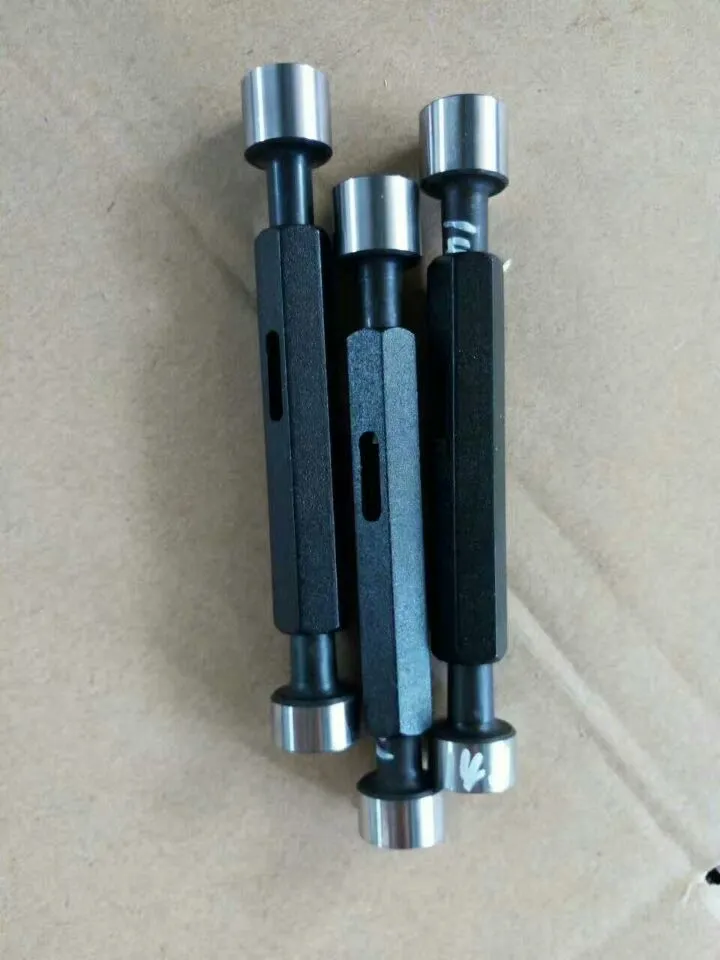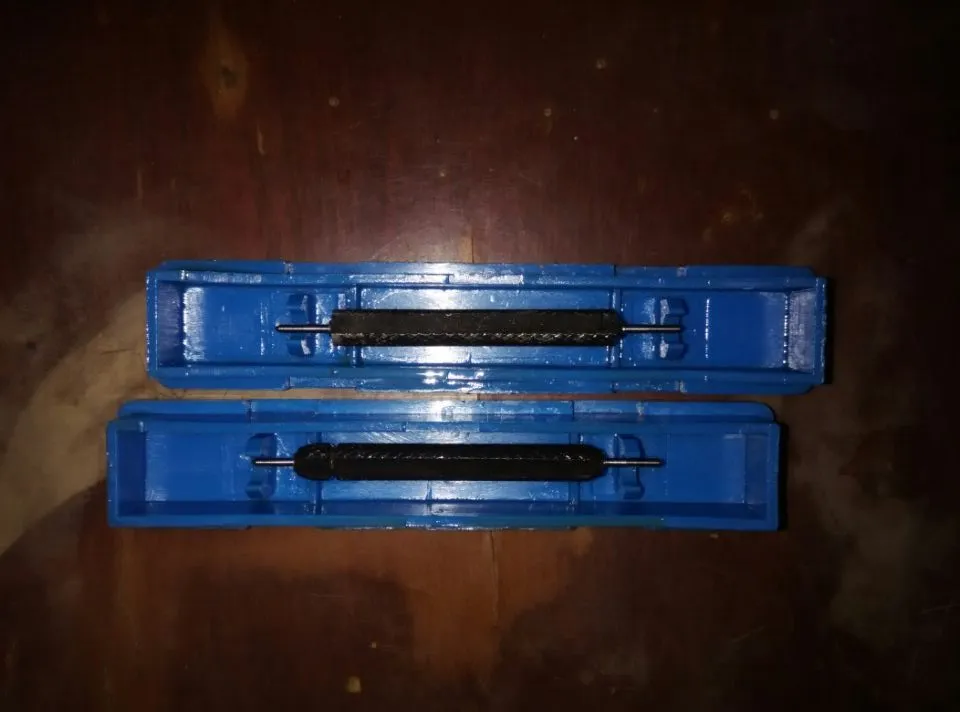Jun . 13, 2025 10:54 Back to list
Small Hole Gauge Use in Aerospace Component Testing
In the aerospace industry, where component reliability can mean the difference between safe flight and catastrophic failure, precision measurement is not just a requirement—it's a matter of life and death. Small hole gauges, plug gauges, and plug ring gauges play pivotal roles in ensuring the dimensional integrity of critical aerospace parts, from tiny fastener holes in turbine blades to the precise fit of engine shafts. This article explores how these instruments contribute to rigorous component testing, their unique applications in aerospace manufacturing, and addresses common customer questions to highlight their indispensable value.

Critical Role of Small Hole Gauges in Aerospace Dimensional Inspections
Aerospace components often feature intricate geometries, including narrow holes and tight tolerances that demand measurement tools with micron-level precision. Small hole gauges, designed to measure diameters as tiny as 0.5mm, are essential for verifying the accuracy of holes in components like fuel nozzles, aerospace fasteners, and heat exchanger tubes. These gauges excel in inspecting holes drilled in exotic materials such as titanium alloys and composite laminates, where even minor dimensional deviations can compromise structural integrity or fluid dynamics.
Calibration of small hole gauges in aerospace applications requires meticulous control over environmental factors. Dust particles or minute oil residues can skew measurements in such tiny apertures, so calibrations are performed in cleanroom environments. Specialized equipment like optical comparators with high-resolution imaging ensures that every hole—no matter how minuscule—meets design specifications. By enabling precise measurements in hard-to-reach or complex geometries, small hole gauges act as the first line of defense against dimensional defects that could escalate into safety risks during flight.
Ensuring Hole Geometry with Plug Gauge Precision in Aerospace Components
While small hole gauges tackle micro-dimensions, plug gauges are indispensable for evaluating the diameter and form of medium to larger holes in aerospace structures. These gauges verify not just nominal size but also roundness, straightness, and surface finish—critical parameters for components like landing gear brackets, engine casings, and wing spar holes. A poorly formed hole can lead to uneven load distribution, accelerating wear and tear or causing catastrophic failure under stress.
In aerospace testing, plug gauges undergo rigorous calibration against traceable master standards, often certified to international norms like AS9100. Temperature-controlled environments prevent thermal expansion errors, as materials in aerospace applications expand and contract significantly with temperature fluctuations. Technicians also inspect for surface defects using tactile sensors, ensuring that even microscopic scratches or burrs—common after machining processes—do not compromise measurement accuracy. By providing reliable pass/fail assessments, plug gauges streamline quality control, allowing manufacturers to confidently approve components for assembly into high-stakes aerospace systems.

Verifying Shaft Dimensions with Plug Ring Gauge Calibration in Aerospace Manufacturing
Complementing hole inspection, plug ring gauges are vital for verifying the external diameters of shafts, pins, and cylindrical components that must fit precisely within mating holes. In aerospace engines, for example, turbine shafts must align perfectly with bearing housings to minimize vibration and energy loss. Plug ring gauges ensure these shafts meet exacting dimensional standards, checking both diameter and geometric tolerances like cylindricity and straightness.
Calibration of plug ring gauges in aerospace involves mutual verification with master plug gauges to maintain complementary precision—a critical factor in interchangeable manufacturing. Specialized equipment measures roundness errors by rotating the gauge around a precision spindle, capturing deviations as small as 0.0001mm. Torque control during measurement is strictly regulated to prevent deformation: too much force could distort the gauge, while too little might result in unstable positioning. By upholding these standards, plug ring gauges ensure that moving parts in aerospace systems operate with minimal friction and maximum reliability, even under extreme conditions like high altitude or rapid temperature changes.

FAQs About Aerospace Gauge Solutions
What Are the Key Advantages of Small Hole Gauges, Plug Gauges, and Plug Ring Gauges for Aerospace Testing?
These gauges offer unmatched precision, compliance, and operational efficiency. Small hole gauges excel in measuring intricate geometries, while plug gauges and plug ring gauges ensure consistent fit between mating components—essential for aerospace systems where looseness or tightness can cause catastrophic failures. Calibrated to international aerospace standards (e.g., AS9100), they reduce the risk of non-compliant parts, minimize costly rework, and streamline certification processes. Investing in these tools is an investment in flight safety and regulatory adherence.
How Often Should Aerospace Calibrate Their Small Hole Gauges, Plug Gauges, and Plug Ring Gauges?
Calibration frequency depends on usage intensity and environmental exposure. In high-cycle aerospace production lines, monthly checks may be necessary to account for wear from frequent use or harsh machining environments. For less frequently used gauges, quarterly or semi-annual calibrations suffice. Always recalibrate after exposure to extreme temperatures, impacts, or suspected contamination—signs that could compromise accuracy. Proactive calibration schedules prevent unexpected downtime and ensure measurements remain trustworthy throughout a component's lifecycle.
Can Small Hole Gauges Accurately Measure Non-Circular Features in Aerospace Components?
Yes, with specialized fixtures. While standard calibrations focus on cylindrical holes, aerospace often requires measuring slots, keyways, or elliptical openings in components like control surfaces or engine mounts. Custom master fixtures, designed to mimic these complex geometries, allow small hole gauges to verify both dimensional accuracy and form tolerance. This adaptability makes them versatile tools for modern aerospace designs, which increasingly rely on non-traditional shapes to optimize weight and performance.
How Does Traceable Calibration Benefit Plug Ring Gauge Users in Aerospace?
Traceability ensures every measurement can be linked to global standards like NIST or UKAS, a requirement for aerospace certification. Calibration reports document reference standards, uncertainty margins, and historical data for each gauge, providing auditable proof of compliance. For plug ring gauges, this means confidence that shaft diameters measured today will match those measured six months from now—critical for maintaining part interchangeability across production batches and supply chains.
Why Choose Professional Calibration Services for Aerospace Small Hole Gauges, Plug Gauges, and Plug Ring Gauges?
Aerospace demands expertise beyond standard workshop calibration. Certified service providers use advanced tools like laser interferometers and coordinate measuring machines (CMMs) to achieve accuracies unattainable with basic equipment. Their technicians are trained to detect subtle issues like material-dependent thermal effects or surface finish impacts, ensuring gauges perform flawlessly in the extreme conditions of aerospace operations. Partnering with professionals minimizes measurement risk, protects your certification status, and ultimately safeguards the reliability of the components that keep aircraft in the sky.
In aerospace manufacturing, precision is non-negotiable—and the right measurement tools are the foundation of that precision. Small hole gauges, plug gauges, and plug ring gauges are not just instruments; they are critical partners in ensuring every component meets the rigorous standards of flight safety and performance. By understanding their applications, prioritizing regular calibration, and leveraging professional expertise, aerospace manufacturers can trust their measurements, comply with global regulations, and deliver components that excel in the most demanding environments. When the stakes are this high, precision isn’t an option—it’s a necessity.
-
Thread Plug Gauge Requires Careful HandlingNewsJul.29,2025
-
Surface plate calibrationNewsJul.29,2025
-
Ring Gauge Ensures Machining AccuracyNewsJul.29,2025
-
Pad Iron Reinforces Anchor PointsNewsJul.29,2025
-
Ground anchor stabilizes embankmentsNewsJul.29,2025
-
Granite Box Maintains Precision FlatnessNewsJul.29,2025
Related PRODUCTS









